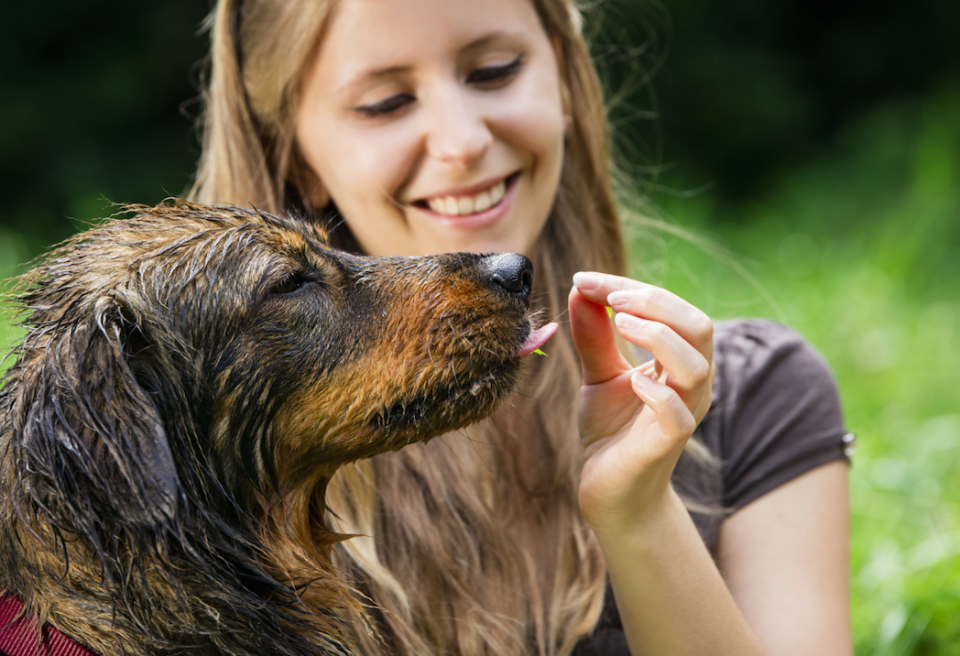Animal lovers who use baby-like ‘dog-speak’ have a greater bond with their pet

Dog owners who talk to their pets like a baby are more likely to have a greater bond with their animals, researchers say.
Scientists say that using “dog-speak” with the pet can even improve its attention span.
They found that dogs need to hear words spoken in a rhythmical high-pitched manner in order to find them relevant.
Researchers said using a baby voice to talk to a dog offers the same benefits to a dog as a child.
Dr Katie Slocombe, from the University of York’s department of psychology, which carried out the research, said: “A special speech register, known as infant-directed speech, is thought to aid language acquisition and improve the way a human baby bonds with an adult.
“This form of speech is known to share some similarities with the way in which humans talk to their pet dogs, known as dog-directed speech.
MOST POPULAR TODAY ON YAHOO
Porn star Stormy Daniels who ‘slept with Donald Trump’ SUES President over £94,000 ‘hush agreement’
Storm Emma uncovers ancient 7,000-year-old forest buried beneath sand near Hartlepool
The world’s oldest message in a bottle has been found 132 years after it was sent
People are dying while searching for a millionaire author’s hidden ‘treasure chest’
Watch: Lidl worker chases suspected shoplifter and hits him over the head with pork leg
“This high-pitched rhythmic speech is common in human interactions with dogs in western cultures, but there isn’t a great deal known about whether it benefits a dog in the same way that it does a baby.
“We wanted to look at this question and see whether social bonding between animals and humans was influenced by the type and content of the communication.”

In experiments, researchers put humans in the same room as dogs and asked them to talk to the animals using different kinds of speech.
In one set of tests, humans talked in dog-speak with phrases such as “you’re a good dog” and “shall we go for a walk?”
Another person spoke to the animals in a plain, unemotional manner, saying things like “I went to the cinema last night”.
Researchers measured the dogs’ attention during speech and then let them choose which speaker they wanted to interact with.
“We found that adult dogs were more likely to want to interact and spend time with the speaker that used dog-directed speech with dog-related content, than they did those that used adult-directed speech with no dog-related content,” said Alex Benjamin, a PhD student at the University of York.
“When we mixed-up the two types of speech and content, the dogs showed no preference for one speaker over the other.
“This suggests that adult dogs need to hear dog-relevant words spoken in a high-pitched emotional voice in order to find it relevant.”

 Yahoo News
Yahoo News 

